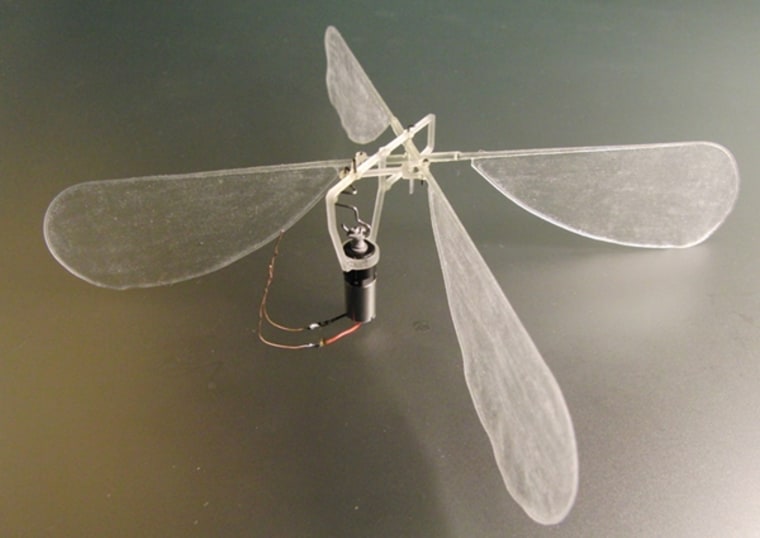Mechanical flying insects can soon be made using printers.
Increasingly, so-called 3-D printers are being used to make items out of plastic, metal, glass, ceramic, even sugar and mashed potatoes. They do so by laying down layers of material much like ordinary printers and then fusing this material together with lasers, electron beams or other means.
Until now, making wings for machines that can effectively mimic the flight of insects and birds has proven a delicate and time-consuming process taking days or longer to complete.
"Production of an untethered, flapping-hovering machine itself is very challenging, and only a few have been made successfully to date," said researcher Hod Lipson, a roboticist at Cornell University.
Now, using 3-D printers, Lipson and his colleagues have shown they can reduce the time it takes to design flapping wings for mechanical insects to roughly an hour.
"Almost everything but the motor and battery were printed," Lipson said.
The artificial " ornithopter " they constructed, which weighs 3.89 grams, can hover stably and untethered for 85 seconds by flapping its 40-micron-thick wings about 30 times a second.
"Our machine is very simple," Lipson said.
Much remains unknown about how flapping wings actually work. "One reason that so few flapping-hovering machines have been demonstrated is that they are very difficult to design, laborious to make and challenging to stabilize," Lipson said.
Using 3-D printers, scientists can readily experiment with wings mimicking those of real insects or virtually any other shape to learn more about this complex form of flight. Such research could lead to flying micro-robots for espionage, search-and-rescue operations and other missions.
"Three-D printing is such a powerful technique for wing design because it is not only very fast, but also offers unparalleled control over the complex shapes and structures required to mimic natural insect flight," said roboticist Charles Richter, also of Cornell.
The scientists detailed their findings online March 3 in the journal Artificial Life.
• Nature’s creatures inspire better flying vehicles
• Military plans hummingbird-sized spies in the sky
• The most innovative inkjet printers to meet your needs
